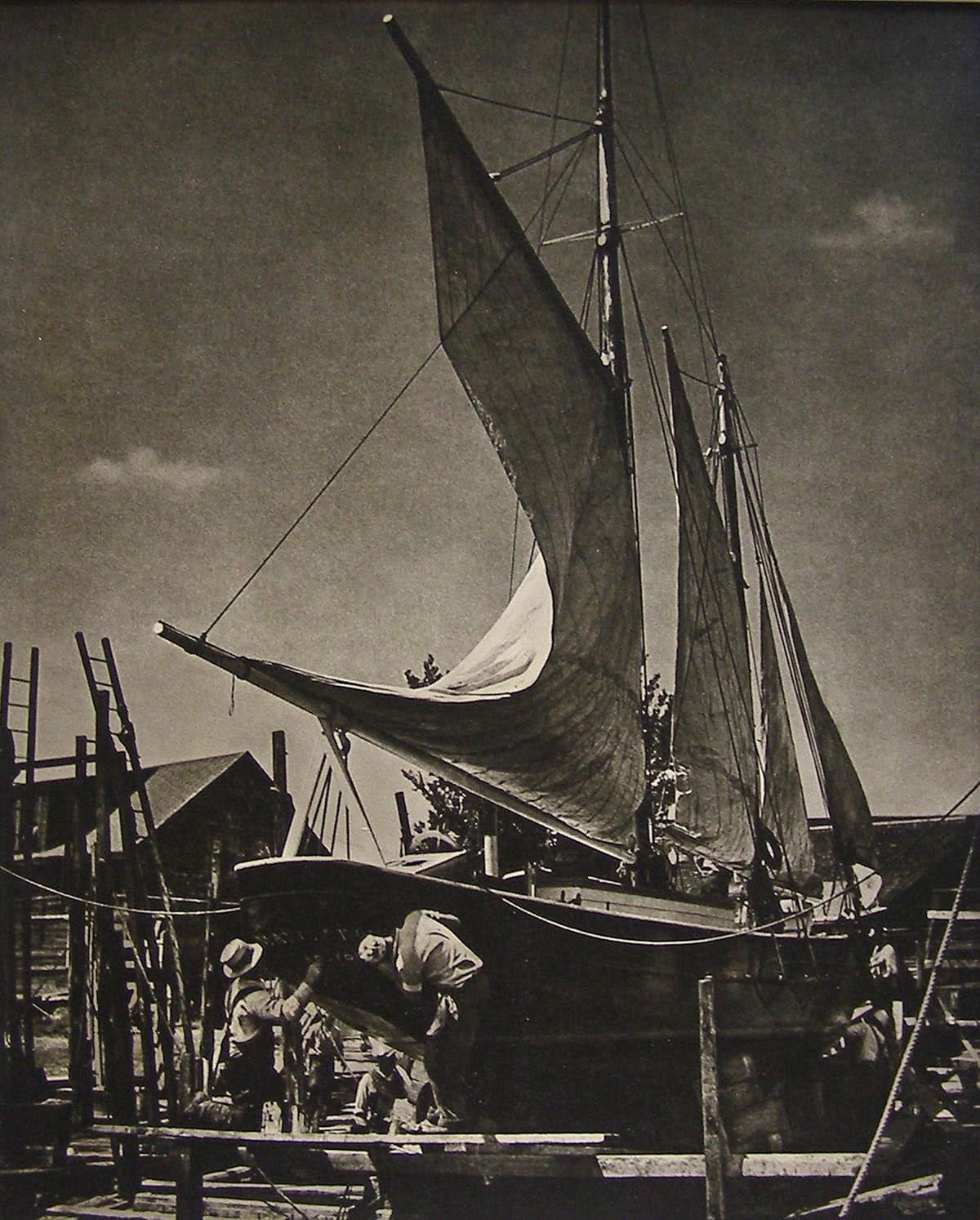artist
Born in Washington DC in 1897, Eleanor Parke Custis is a direct descent of Martha Washington. From 1915-1925 she trained under Edmund C. Tarbell at the Corcoran School of Art. She also studied with Henry Snell during the summers of 1924 and 1925 in Boothbay Harbor, Maine. Such extensive training culminated in a solo exhibition in 1925 at the Washington Art Club. From 1926-1929, she extensively traveled doing watercolors in France, Holland, Italy and Switzerland. In 1933 she visited Cairo and in 1937 and 1938 she was in Central and South America. By the mid-thirties, her interest in painting waned as her passion of photography intensified, and in 1935 she wrote and illustrated a book, "Composition and Pictures." By the mid-forties, she was entrenched in photography and was given a solo exhibition in 1946 at the Brooklyn Institute. She began spending more time at her beloved summer residence in Gloucester and in 1960 she moved there permanently from her home in Georgetown.
Description
Dry Dock, Gloucester is a powerful example of Custis’ ability to elevate everyday labor into visual poetry. In this striking image, a sailboat dominates the composition, grounded on dry land while undergoing repairs. Its sails are partially unfurled, not taut, but gently billowing, as if caught in a moment of breath or pause. They curve and hang with a natural softness, lending the boat a sense of latent movement between stillness and motion.
Beneath the boat, several figures work intently, their bodies curved into the shape of their labor. The contrast between the dark, richly shadowed lower half and the bright, expansive sky above creates a strong visual tension, anchoring the viewer's eye. The sharp interplay of light and dark adds a bold, almost theatrical dimension to the image, emphasizing the textures of wood, fabric, and flesh.
True to Custis’s Pictorialist sensibility, the photo balances documentary realism with artistic interpretation. The soft tonal gradations and carefully composed forms reflect her training as a painter, while the subject matter, working men, a ship, a dock, ties into her recurring themes of craft, labor, and maritime life. There's a quiet heroism in the scene, where human effort and natural elements coexist in a kind of visual harmony.



